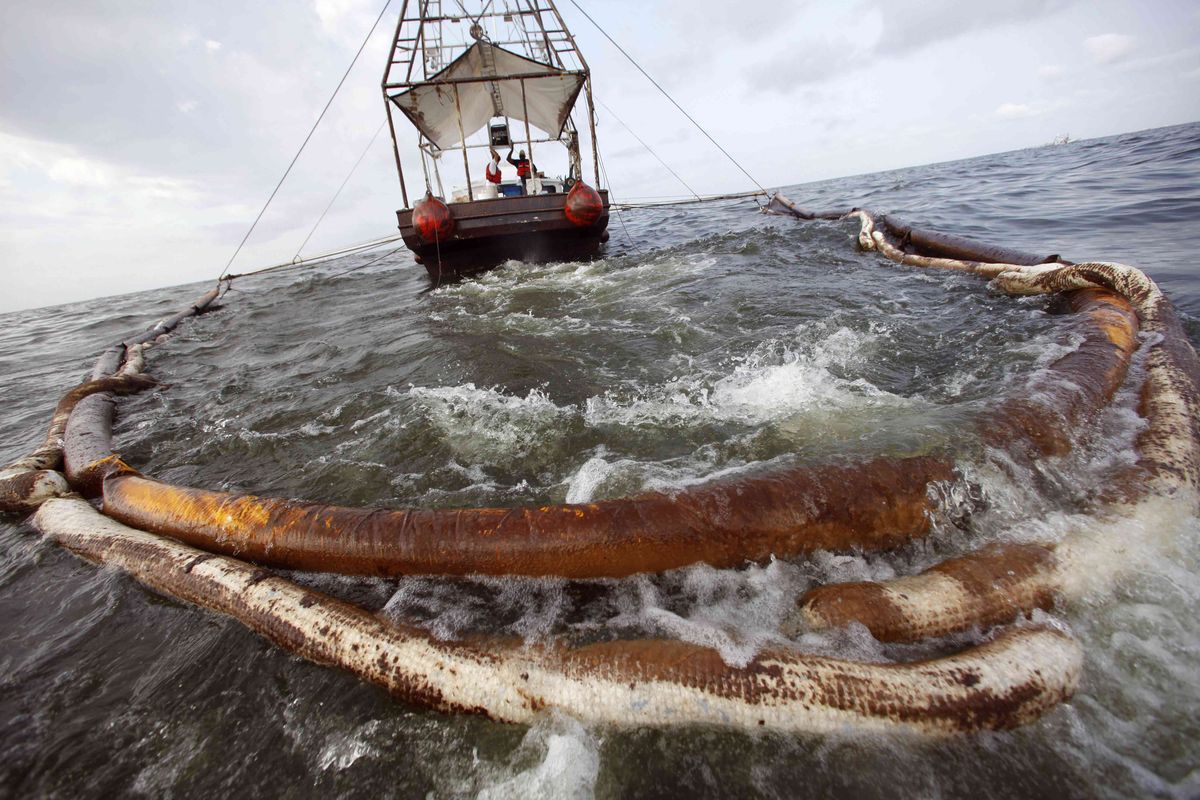BP hopeful about well cap
Obama chides company about TV ad campaign

KENNER, La. – In a sign that BP may be on the verge of subduing its uncontrolled well, oil started flowing through a containment cap into a drill ship Friday, even as President Barack Obama chastised the company for launching a multimillion-dollar advertising campaign.
As engineers gradually ramped up the flow to the ship Enterprise, cautious BP officials said it would be a day or more before they could judge how successful the cap was at containing the leak that is feeding the largest spill in U.S. history.
But after a string of failures to contain the spewing well beneath the Gulf of Mexico, they sounded hopeful. “Things are going as planned,” BP Senior Vice President Kent Wells said about 12 hours into the operation. “I’m quite encouraged.”
With its stock price plummeting and its chief executive under attack, BP came in for another scolding Friday from Obama, who arrived in Louisiana on his third trip to the Gulf since the Deepwater Horizon explosion April 20.
After meeting with local and Gulf state officials, he criticized the oil giant for mounting an expensive advertising campaign and considering dividend payments.
“My understanding is that BP had contracted for $50 million worth of TV advertising to manage their image in the course of this disaster,” the president said in remarks to reporters. “In addition, there are reports that BP will be paying $10.5 billion in dividend payments this quarter.
“Now, I don’t have a problem with BP fulfilling its legal obligations,” Obama added. “What I don’t want to hear is that they’re spending that kind of money on shareholders and spending that kind of money on TV advertising, (but) they’re nickel-and-diming fishermen or small businesses here in the Gulf who are having a hard time.”
BP has been expected to announce it would maintain dividend payments, but Obama’s comments seemed aimed at changing the company’s mind. Last year, it reported $27 billion in cash flow from operating activities. So far, it has spent more than $1 billion on the spill response.
Strong winds Friday were propelling pieces of the slick toward the Florida Panhandle and threatening the coasts of Alabama and Mississippi, which have so far largely escaped the tendrils of crude extending from the leak site.
Coast Guard Adm. Thad Allen, the head of the federal disaster response, worried that as wind breaks up the massive spill into smaller slicks moving in different directions, it will strain cleanup resources and make the oil harder to fight.
Scientists with the University of South Florida said laboratory tests had confirmed that at least two extensive plumes detected underwater miles from the leak are from the spill, the Associated Press reported.
BP chief executive Tony Hayward has said there was no evidence of large underwater plumes, and the National Oceanic and Atmospheric Administration has been reluctant to identify them without conclusive lab evidence.
In its start-up stage, the cap operation was capturing only a fraction of the estimated 500,000 to 800,000 gallons of oil that has been rushing into the Gulf daily for six weeks. Friday, dark clouds of escaping gas and oil continued to swirl around the cap, which was seated on the blown-out deep-sea well Thursday night.
But in a round of interviews, BP Chief Operating Officer Doug Suttles said that when fully operational, the device “should capture the vast majority” of crude flowing from the damaged well.
BP has tried a variety of fixes only to see them stumble on the challenges of working at a depth of 5,000 feet, where the water pressure is crushing and only underwater robots can venture.
A big containment dome placed over the leak was quickly clogged by slushy gas hydrates. An elaborate “top kill” operation to plug the well with heavy drilling fluids was abandoned when it became apparent the upward force of the spouting oil was too great to overcome.
BP and federal officials then shifted to a containment strategy, involving the cap, while they work on the ultimate solution: two relief wells, now being drilled, that will be used to pump cement into the bottom of the damaged well, permanently sealing it.
Engineers were implementing the cap procedure slowly and carefully to avoid pressure and hydrate problems.